By Morad Nazari, Brennan S. McCann, Marco Fagetti, Matthew M. Wittal, Michael Elmore, and Jeffrey D. Smith
Reliable space mission design necessitates the consideration of uncertainties in a vehicle’s mass and inertia properties—i.e., mass, center of mass (CoM), and moment of inertia (MoI)—due to unknown trash stowage in a trash-filled space vehicle, arm motion in spacecraft with robotic arms, debris removal, space rendezvous, proximity operations, docking, and other space operations. Knowledge of the MoI and CoM in the control algorithms can improve the requisite control effort of the vehicle in question. Furthermore, slosh (fluid motion) of liquid fuels adds complexity to spacecraft dynamics. The complex dynamical motion of liquid sloshing in a spacecraft’s tank is difficult to fully capture and can have profound coupling effects with the dynamics and controls of the spacecraft. Current technological advances can utilize computational fluid dynamics (CFD) to simulate the liquid’s sloshing. But CFD require a significant amount of computational time and power, which makes them impractical for onboard, online application.
To reduce computational load, alternative techniques use dynamics of particles in equivalent mechanical models (EMMs)—such as a group of spring-mass-damper systems or pendulums—to present approximate models of slosh, usually with reasonable accuracy. Furthermore, fluid motion in microgravity is different from motion under large gravity. Under normal gravity, the interaction of gravitational body forces and inertial forces controls the slosh. The gravitational body force is weak under reduced gravity, but surface tension becomes important because it tends to restore the original configuration when a liquid interface moves. The Bond number characterizes relative dominance of inertial and gravity forces on fluid motion.
Estimation of Mass and Inertia Properties
Figure 1. Sloshing pendulum model. Figure courtesy of the authors.
In contrast to the extended Kalman filter, the unscented Kalman filter (UKF)—primarily developed for state estimation [4]—does not linearize the estimation error dynamics. The UKF employs the unscented transform on sigma points and obtains the distribution changes as they pass through a nonlinear function. State prediction then propagates states and their covariances, after which state correction incorporates measurements to update the states. Mass and inertia properties estimation—i.e., estimation of the mass, CoM, and MoI—is a nontrivial problem.
Due to the nonlinearities on special Euclidean group \(\mathsf{SE(3)}\) and its tangent bundle \(\mathsf{TSE(3)}\), a UKF is well suited to address uncertainties in those system parameters as well as system states. In fact, the UKF on \(\mathsf{SE(3)}\) has been explored in the existing literature [1, 2, 5]. Development of a UKF on \(\mathsf{TSE(3)}\) for state and parameter estimation benefits from the advantages of this geometric framework over attitude parameterization sets (APSs); it avoids singularity and non-uniqueness issues but adds to the complexity of formulating the filter on manifolds with required mappings and retractions [8, 9].
One can perform state and parameter estimation via either joint methods (where the unknown parameters are appended to the state vector) or dual methods (where the parameters are predicted and corrected independently of the states), depending on whether the unknown parameters are varying or invariant [10, 11].
Modeling Slosh Dynamics via EMMs
As an EMM, consider a group of pendulums with bob masses \(m_{i}\) \((i=1,2,\cdots,N)\) and lengths \(L_{i}\) that are free to swing about their pivot points in their respective planes with angles \(\psi_i\) (see Figure 1). A pendulum that is analog to fluid sloshing is unique to each tank shape. D.O. Loman developed an analytical tool called winSlosh that computes pendulum parameters [6, 7]. For known dry mass and inertia, winSlosh receives tank geometry and liquid properties as input and computes numerical values of pendulum parameters as output.
Consider an inertial frame \(\mathcal{N}:\left\{\mathcal{O}, \widehat{n}_{1}, \widehat{n}_{2}, \widehat{n}_{3}\right\}\) and body frame \(\mathcal{B}:\{\mathcal{O}_{\mathcal{B}}, \widehat{b}_{1}, \widehat{b}_{2}, \widehat{b}_{3}\}\) whose origin—i.e., the vehicle’s CoM—moves with respect to the frame \(\mathcal{G}: \left\{\mathcal{O}_{\mathcal{G}}, \widehat{g}_{1}, \widehat{g}_{2}, \widehat{g}_{3}\right\}\) that is geometrically fixed to the rigid body. One could also arbitrarily fix sensor suite and actuator frames to the spacecraft structure (not shown in Figure 1). Since the CoM can change appreciably due to slosh, we write the dynamics relative to the \(\mathcal{G}\) frame. The Euler-Lagrange equations are as follows:
\[\frac{d}{dt}\left(\frac{\partial\mathcal{L}}{\partial \omega}\right)+\omega^{\times}\frac{\partial \mathcal{L}}{\partial \omega}+v^{\times}\frac{\partial \mathcal{L}}{\partial v}+\left(\frac{\partial \mathcal{L}}{\partial R}^{T}R-R^{T}\frac{\partial \mathcal{L}}{\partial R}\right)^{||} = L_{NC} \quad \in \mathbb{R}^{3} \]
\[ \frac{d}{dt}\left(\frac{\partial \mathcal{L}}{\partial v}\right)+\omega^{\times}\frac{\partial \mathcal{L}}{\partial v}-R^{T}\frac{\partial \mathcal{L}}{\partial r} = f_{NC} \quad \in \mathbb{R}^{3} \tag1 \]
\[ \frac{d}{dt}\left(\frac{\partial \mathcal{L{}}}{\partial \dot{\psi}}\right)-\frac{\partial \mathcal{L}}{\partial \psi} = Q_{NC} \quad \in \mathbb{R}. \]
Here, \(\mathcal{L}=T-V\) is the Lagrangian where \(T\) and \(V\) respectively represent the system’s kinetic and potential energies [3]. Also, \(R \in \mathsf{SO}(3)\) is the rotation matrix from the \(\mathcal{B}\) frame to the \(\mathcal{N}\) frame, \({r}\in \mathbb{R}^3\) is the position of the \(\mathcal{B}\) frame with respect to the \(\mathcal{N}\) frame, and \(\omega \in \mathbb{R}^3\) and \(
v\in \mathbb{R}^3\) are the angular and translational velocities relative to the \(\mathcal{N}\) frame and expressed in the \(\mathcal{B}\) frame. The \((\cdot)^{\times}: \mathbb{R}^{3} \rightarrow \mathfrak{so}(3)\) operator (\(\mathfrak{so}(3)\) is the space of \(3\times 3\) real skew-symmetric matrices) is defined for \(e_1\), \(e_2\in\mathbb{R}^3\), such that \(e_1^\times e_2 = e_1\times e_2\) and the \((\cdot)^{\|}\) operator is the inverse of the \((\cdot)^{\times}\) operator. The terms on the right-hand side of \((1)\) represent non-conservative moments and forces.
Figure 2. State and parameter estimation via dual method \(
(x=(R,r,\omega,v,\dot\omega, \dot v, \psi,\dot\psi,\ddot\psi))\). Figure courtesy of the authors.
The aforementioned kinetics and the kinematics are used in the \(\mathsf{TSE(3)}\)-based filter (see Figure 2). Details of the state estimation—including the state prediction and state correction—are available in the literature [8, 9].
After some manipulation and through filtering accelerations, we can rewrite the nonlinear equations \((1)\) as \(\hat{C} \hat{\Phi} = \hat{D}\) — i.e., in a form that is linear in the masses, where \(\hat{\Phi} = [\hat{m}_{\mathcal{S}}, \hat{m}_1]^T \in \mathbb R^2\) and elements of \(\hat C\in\mathbb{R}^{7N\times 2}\) and \(\hat D\in \mathbb{R}^{7N}\) are estimates of the states and parameters of the system (\(N\) is the number of time steps at each iteration) [3]. We can leverage the Moore-Penrose inverse to solve for \(\Phi\) as \(\hat \Phi = \hat C^+ \hat D\) (see Figure 2). This inverse provides the least-squares solution for the masses. In the absence of an EMM, some transformations may be required to write the nonlinear equations of motion in a form that is linear in terms of the mass and inertia properties.
Figure 3. Pendulum angle. Figure courtesy of the authors.
We implemented this methodology on a spacecraft with a dry mass of 4,762 kilograms (kg) and MoI of \(J = \textrm{diag}([108788, 108788, 19050])\) kg \(\cdot\) meters2 with the liquid stationary mass of \(m_{\mathcal{S}} = 394.675\) kg and liquid moving mass of \(m_1 = 155.732\) kg in a circular low lunar orbit. While we only consider one pendulum and one tank in this example, one can readily generalize the methodology to a multitude of tanks and pendulums. According to the results, all state estimation errors converge within the \(\pm3\sigma\) bounds that are dictated by the covariance, and the mass estimates converge to their true values (see Figures 3 and 4).
Figure 4. The stationary and moving masses of liquid. Figure courtesy of the authors.
By evading the issues of APSs, our pose and parameter estimation scheme can help avoid chattering in the presence of noise/delay and discontinuous control. It also allows for the design of a single estimator/controller for the vehicle’s rotational and translational dynamics, particularly in situations where translational and rotational dynamics (e.g., orbital motion and attitude in spacecraft motion) are coupled.
Morad Nazari delivered a minisymposium presentation on this research at the 2023 SIAM Conference on Control and Its Applications, which took place in Philadelphia, Pa., earlier this year.
References
[1] Brossard, M., Bonnabel, S., & Barrau, A. (2018). Unscented Kalman filter on Lie groups for visual inertial odometry. In 2018 IEEE/RSJ international conference on intelligent robots and systems (IROS) (pp. 649-655). Madrid, Spain: Institute of Electrical and Electronics Engineers.
[2] Brossard, M., Bonnabel, S., & Condomines. J. (2017). Unscented Kalman filtering on Lie groups. In 2017 IEEE/RSJ international conference on intelligent robots and systems (IROS) (pp. 2485-2491). Vancouver, Canada: Institute of Electrical and Electronics Engineers
[3] Fagetti, M., McCann, B.S., Nazari, M., Wittal, M.M., Elmore, M., & Smith, J.D. (2023). Mass and inertia property estimation on \(\mathsf{TSE(3)}\) in the presence of a sloshing liquid. In AIAA/AAS astrodynamics specialist conference. Big Sky, MT: Space Flight Mechanics Committee.
[4] Julier, S.J., & Uhlmann, J.K. (1997). A new extension of the Kalman filter to nonlinear systems. In I. Kadar (Ed.), Signal processing, sensor fusion, and target recognition VI (Vol. 3068) (pp. 182-193). SPIE
[5] Loianno, G., Watterson, M., & Kumar, V. (2016). Visual inertial odometry for auadrotors on \(\mathsf{SE(3)}\). In 2016 IEEE international conference on robotics and automation (ICRA) (pp. 1544-1551). Stockholm, Sweden: Institute of Electrical and Electronics Engineers.
[6] Lomen, D.O. (1965). Digital analysis of liquid propellant sloshing in mobile tanks with rotational symmetry (NASA contractor report 230). San Diego, CA: General Dynamics/Astronautics.
[7] Lomen, D.O. (1965). Liquid propellant sloshing in mobile tanks of arbitrary shape (NASA contractor report 222). San Diego, CA: General Dynamics/Astronautics.
[8] Mangiacapra, G., Wittal, M., Capello, E., & Nazari, M. (2022). Unscented Kalman filter and control on \(\mathsf{TSE(3)}\) with application to spacecraft dynamics. Nonlin. Dynam., 108(3), 2127-2146.
[9] McCann, B.S., Nazari, M., Wittal, M.M., & Smith, J.D. (2023). Rigid body pose estimation on \(\mathsf{TSE(3)}\) for spacecraft with unknown moments of inertia. In AIAA SciTech forum. National Harbor, MD: American Institute of Aeronautics and Astronautics.
[10] Wan, E.A., & Nelson, A.T. (1996). Dual Kalman filtering methods for nonlinear prediction, smoothing, and estimation. In NIPS'96: Proceedings of the 9th international conference on neural information processing systems (pp. 793-799). Denver, CO.
[11] Wan, E.A., Van der Merwe, R., & Nelson, A.T. (1999). Dual estimation and the unscented transformation. In NIPS'99: Proceedings of the 12th international conference on neural information processing systems (pp. 666-672). Denver, CO.
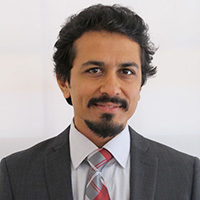
|
Morad Nazari is an assistant professor of aerospace engineering at Embry-Riddle Aeronautical University (ERAU). His research focuses on nonlinear dynamics, geometric mechanics, and spacecraft attitude dynamics and control.
|
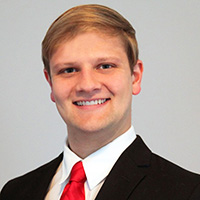 |
Brennan S. McCann is a Ph.D. candidate in aerospace engineering at ERAU.
|
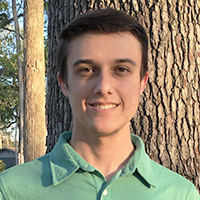
|
Marco Fagetti is a Ph.D. candidate in aerospace engineering at ERAU.
|
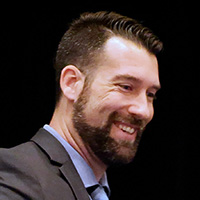
|
Matthew M. Wittal is a Ph.D. candidate at ERAU and an automation and robotics systems engineer at the Granular Mechanics and Regolith Operations Laboratory within NASA’s Kennedy Space Center.
|
 |
Michael Elmore is a fluids analyst at both a.i. Solutions and the Launch Services Program within NASA’s Kennedy Space Center.
|
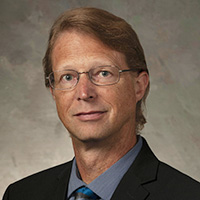 |
Jeffrey D. Smith is the deputy manager at Deep Space Logistics within NASA’s Kennedy Space Center.
|